Archive
2022
KubaParis
OASIS


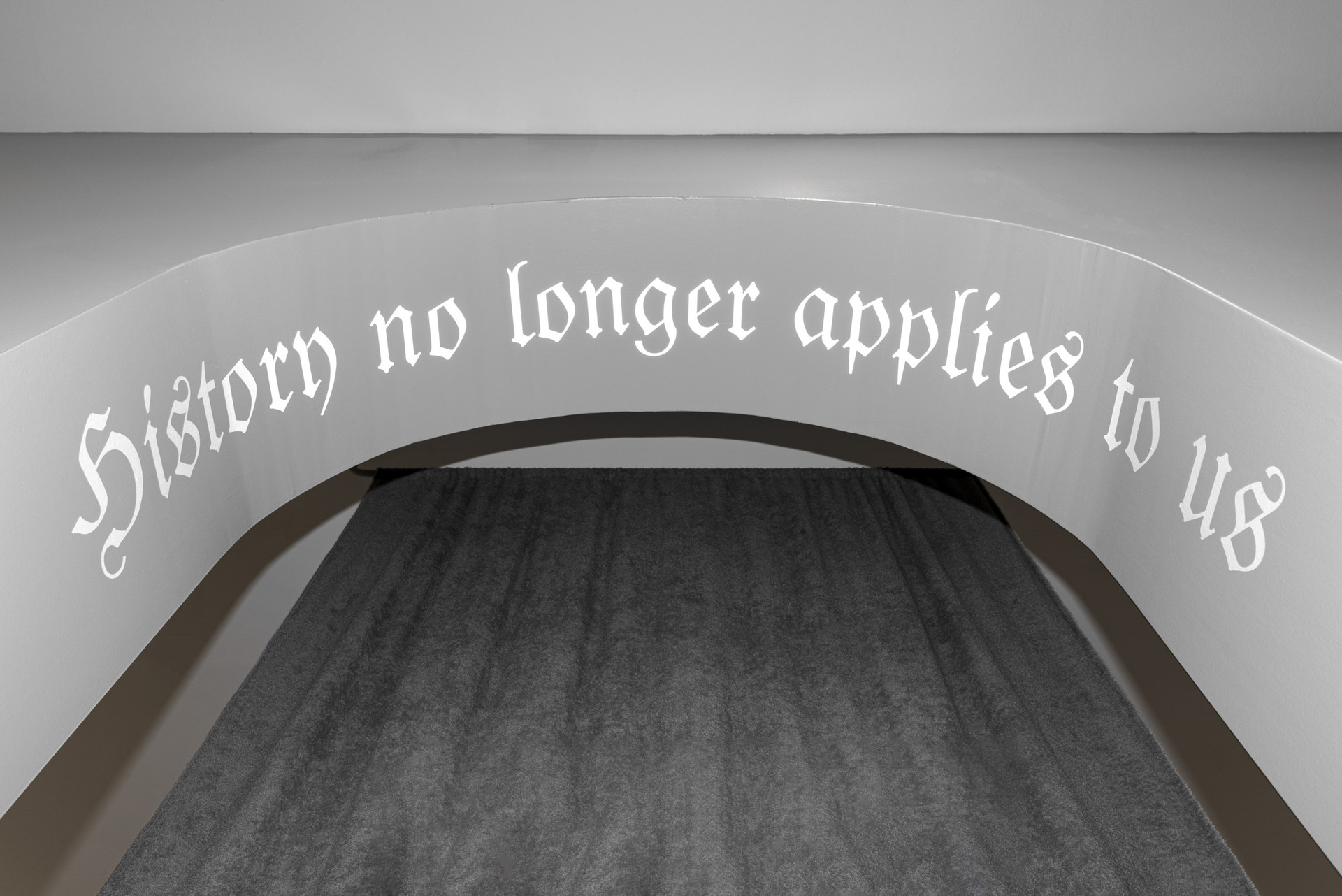

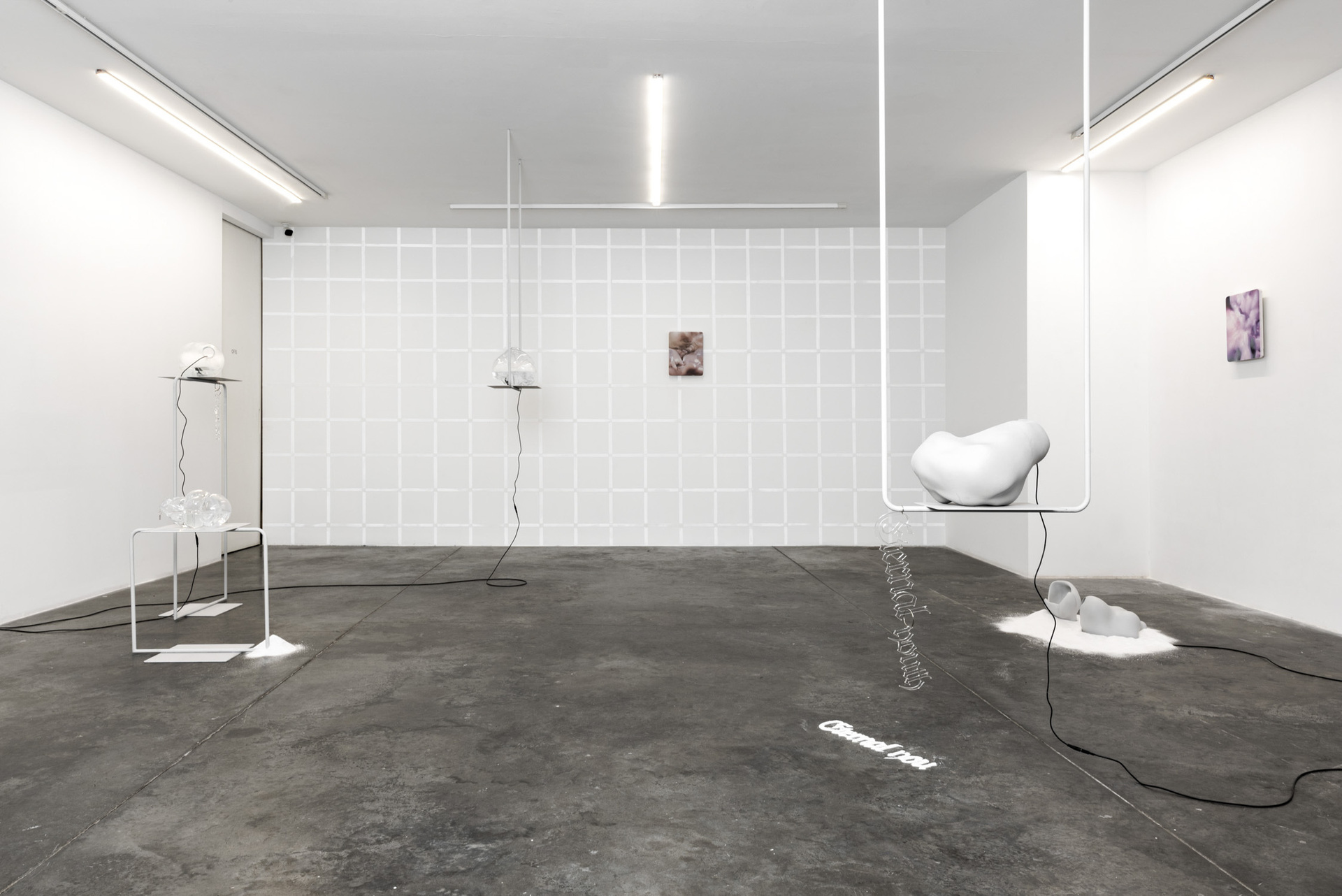
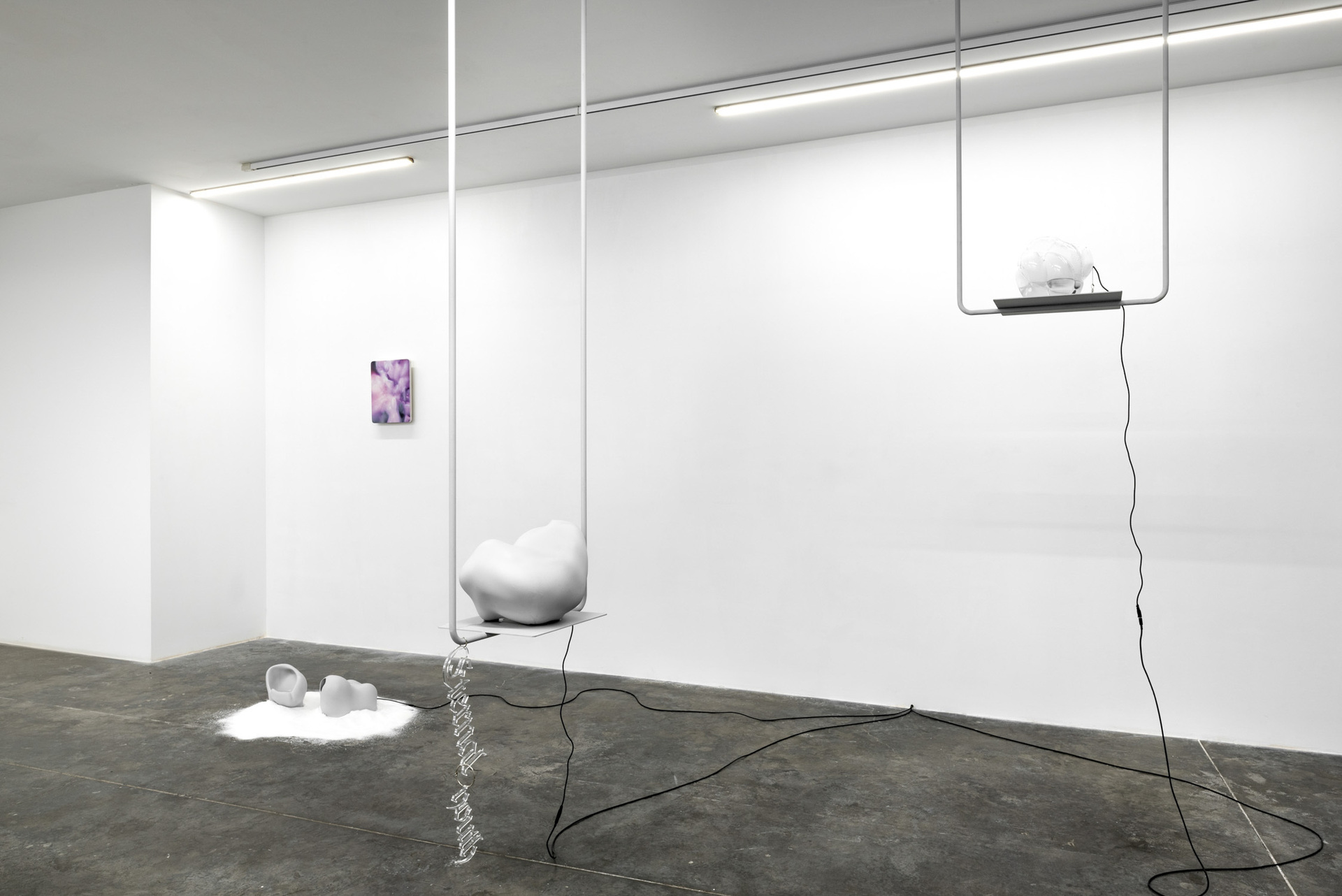
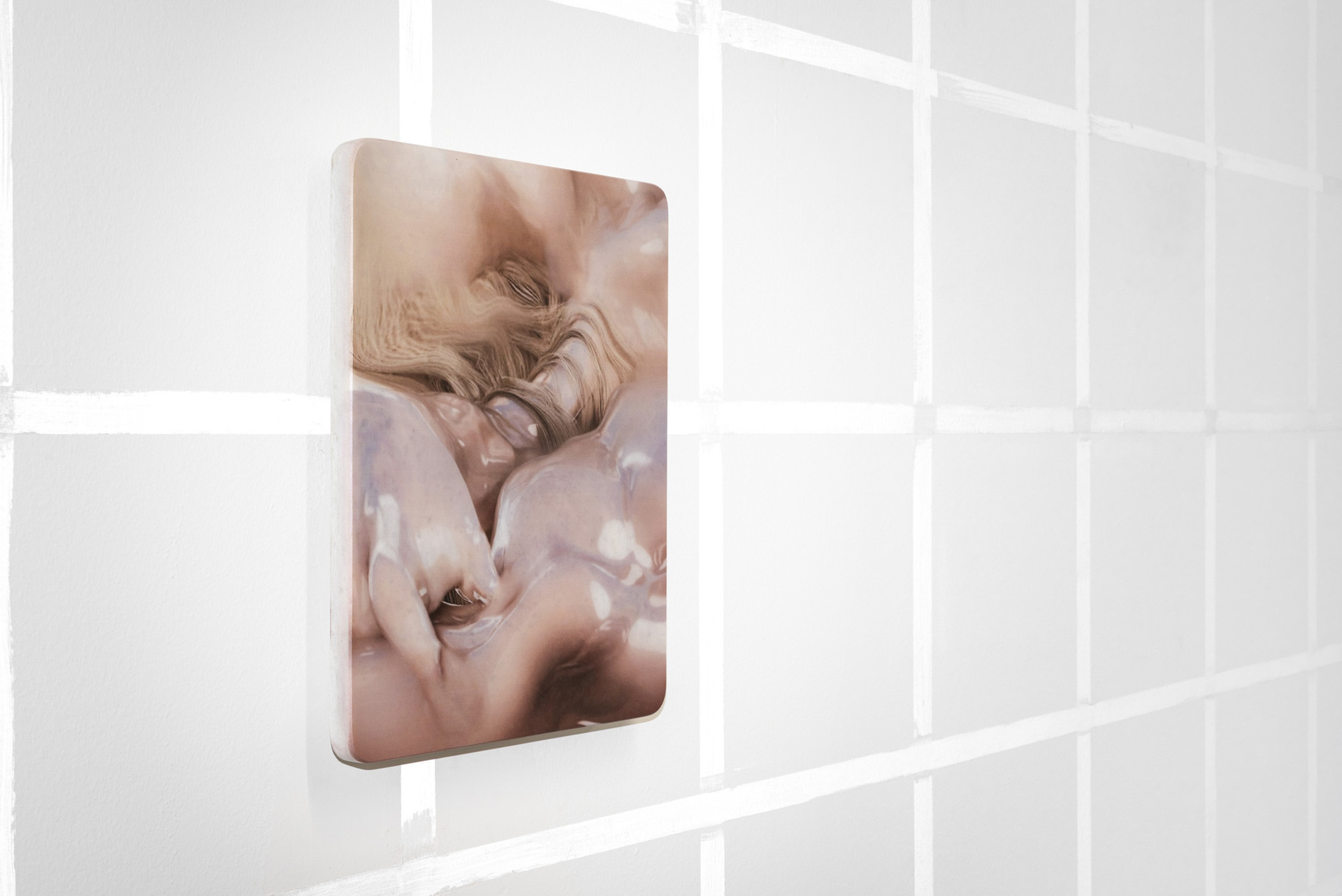
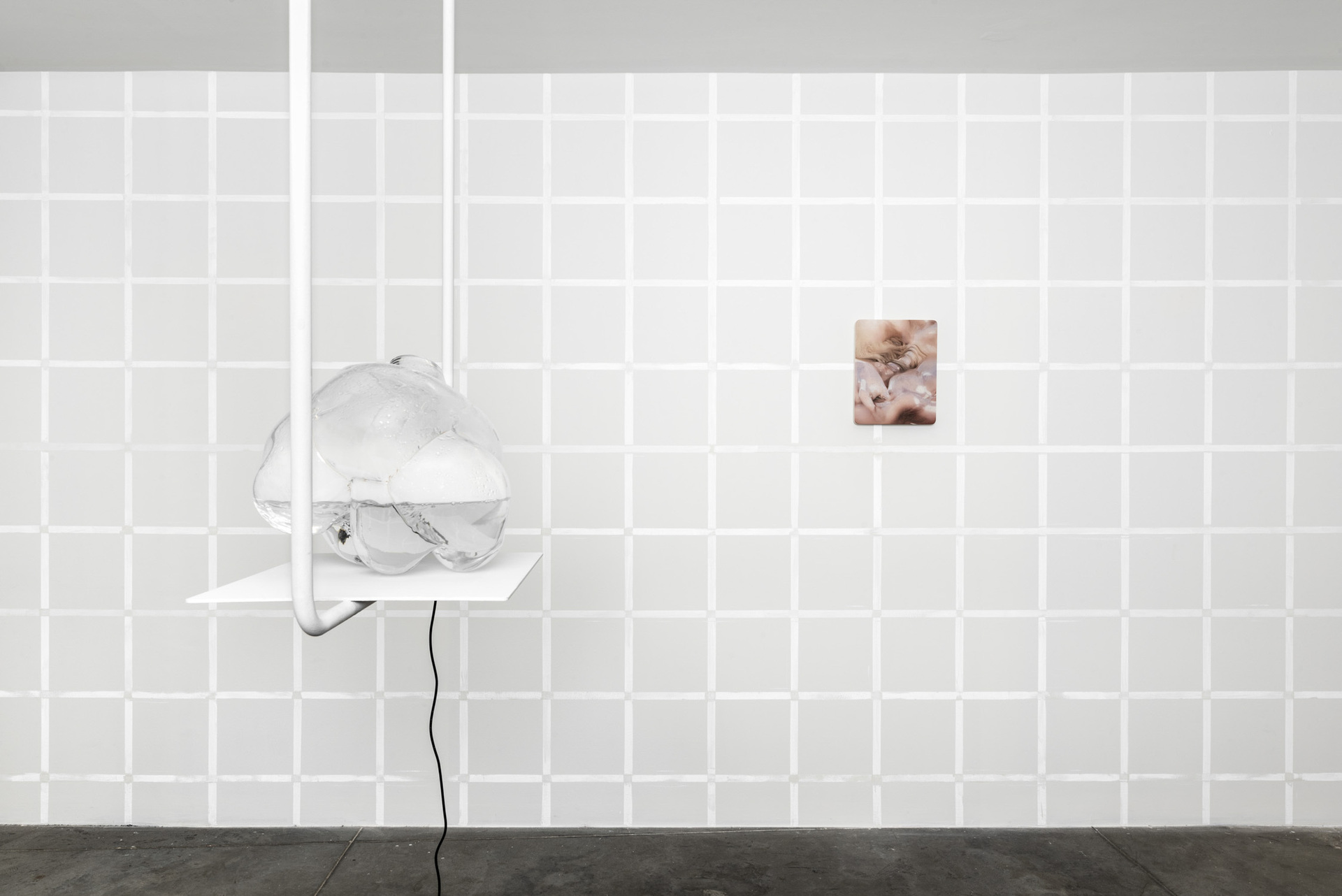
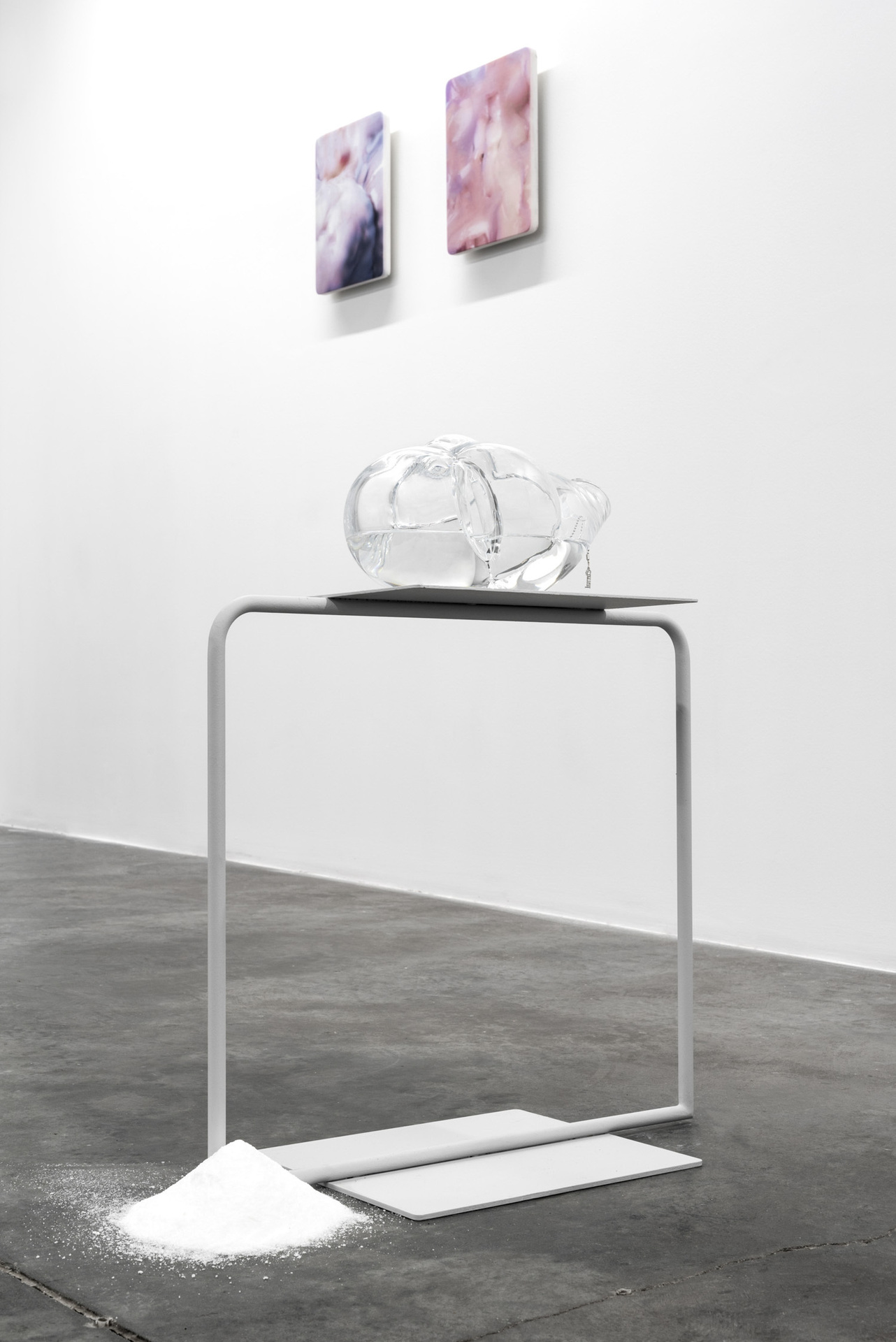
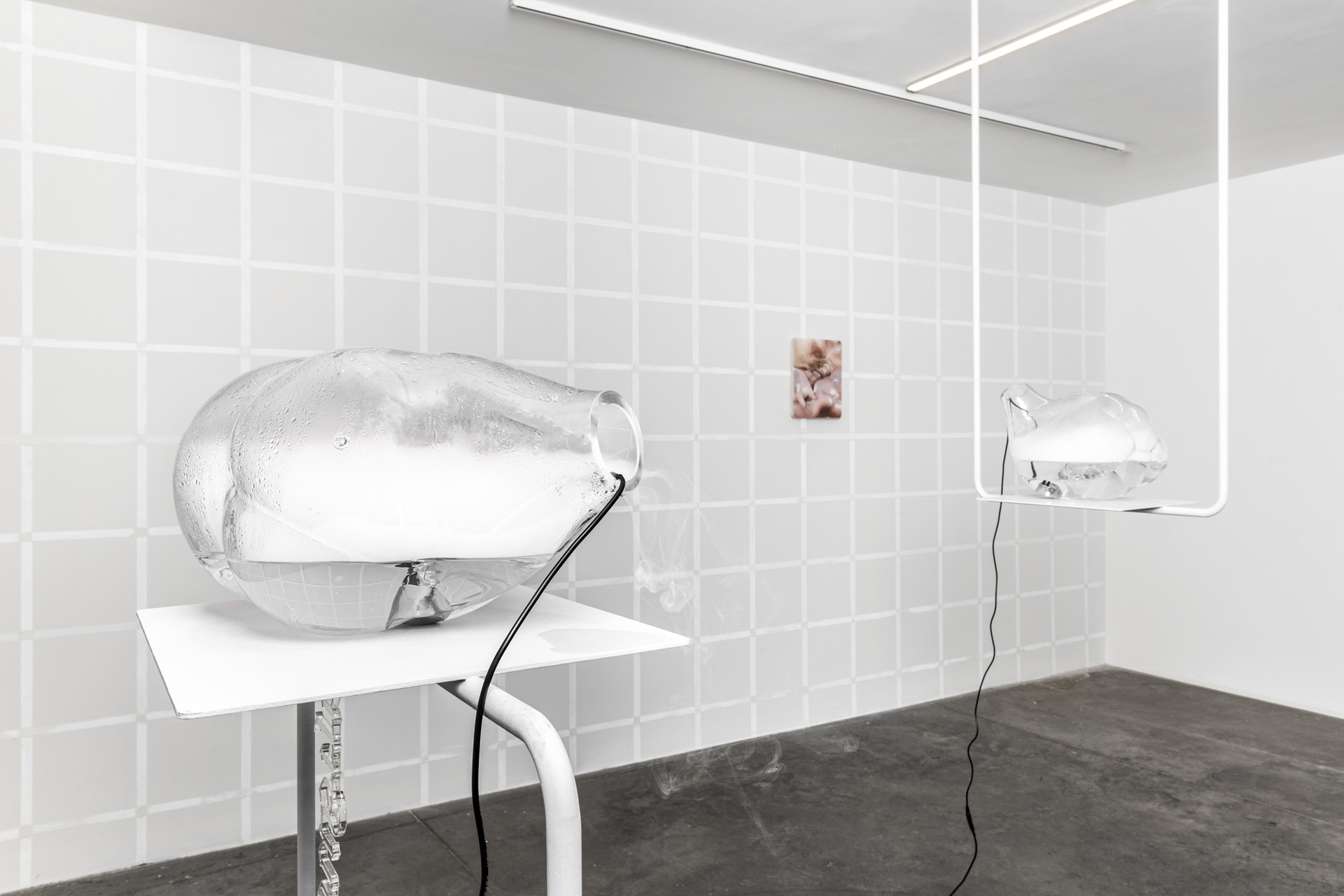
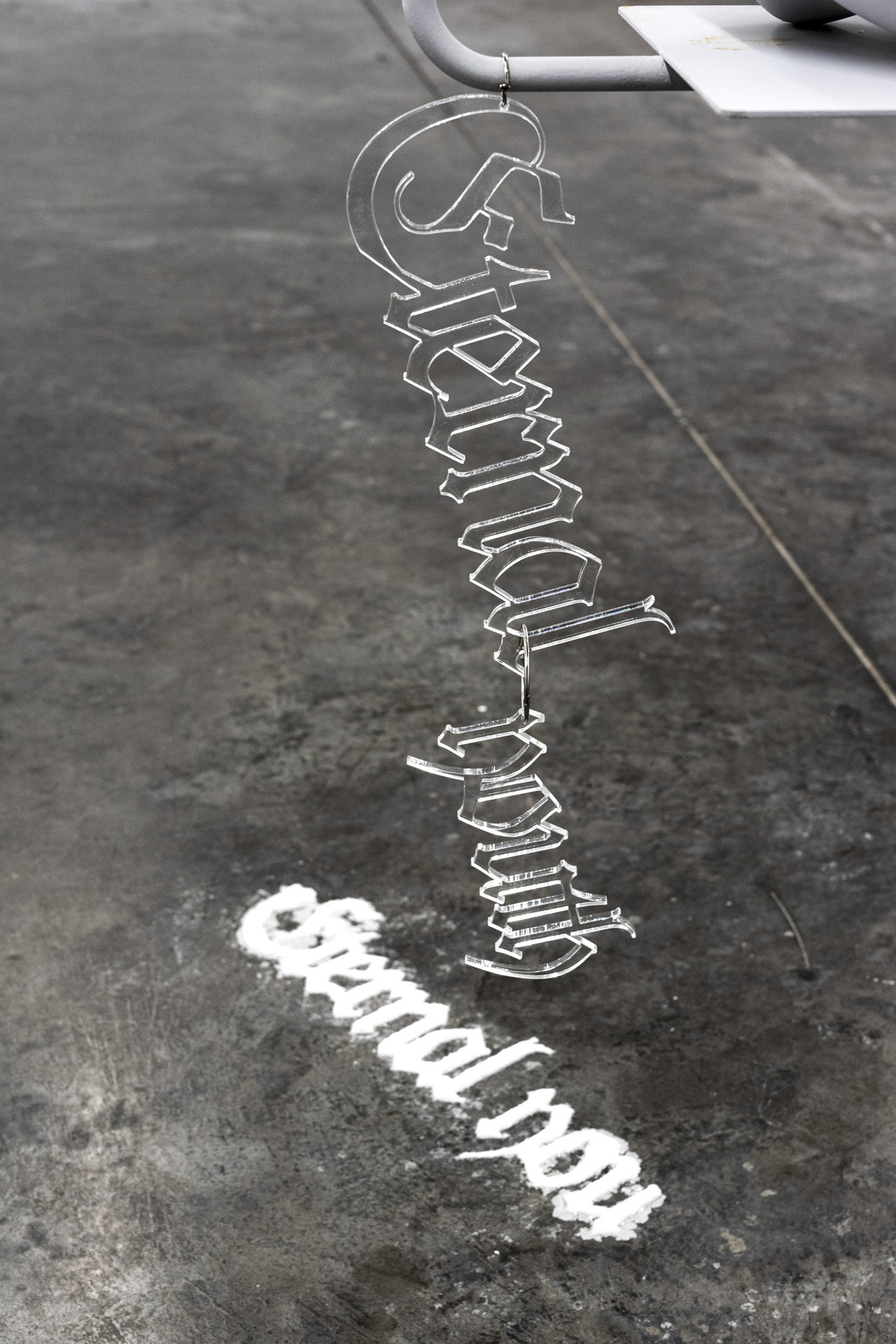


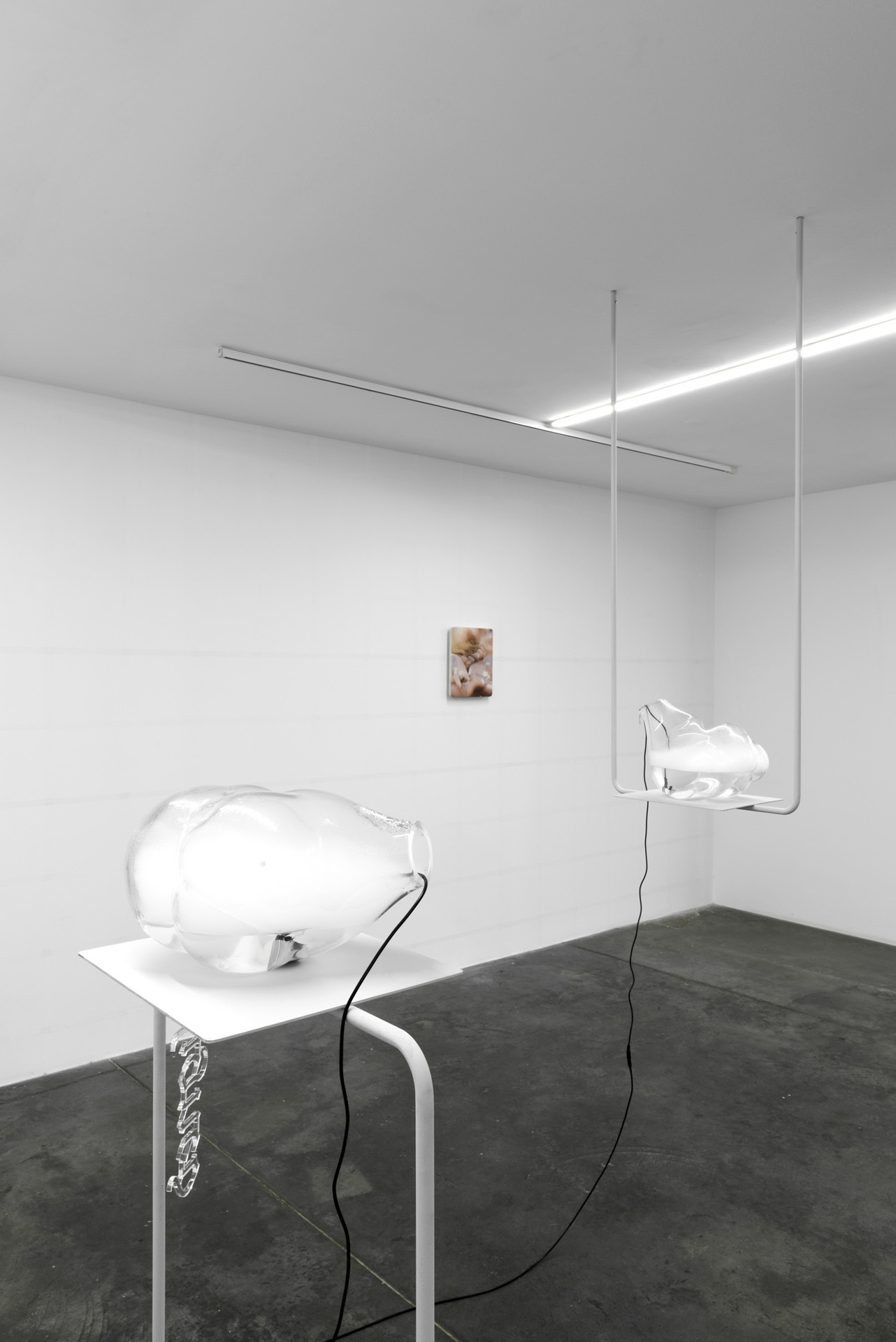



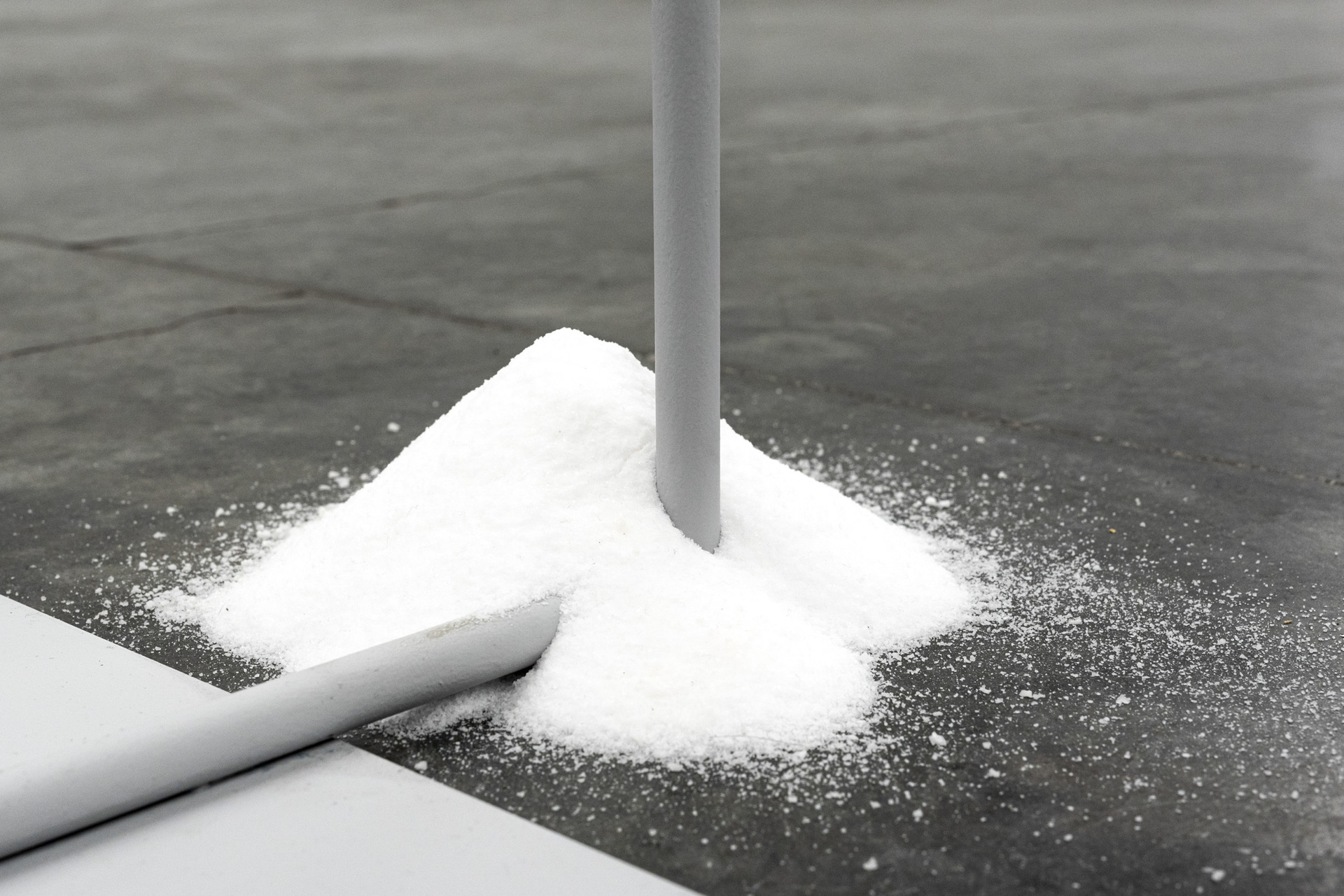

Location
SANATORIUMDate
03.02 –12.03.2022Photography
Zeynep FIRATSubheadline
SANATORIUM presents Christiane Peschek’s first solo show in Turkey entitled OASIS between the dates February 4 and March 13, 2022. OASIS stands as a potential sanctuary at the end of the Anthropocene, a safe space where a nonbinary, value-free and inclusive corporeality is living. OASIS is a post-body spa, where self-care practices meets cyber-humanism, playfully stimulating awareness of expanded corporeality in the digital field. OASIS is a poly-sensory installation where both, the physical body and the mind, can be prepared for the sensuality of virtuality. The spa becomes an experimental field of mystical otherness. Haptics, materiality, atmosphere, multi-sensuality and relationships of queer, trans-corporeal realities in the installation affect the visitors and promise a regeneration from the solid physicality.Text
Exfoliation: Finding the (un)bodies
Melih Aydemir
Waiting for the steam to soften my hardened physicality
exfoliating the bumps of the glitched skin
to reach the desired constellation [1] of self-representations
a reptile shedding their skin so they can continue to grow
kese rubbing the grime away
alpha hydroxy acid, beta hydroxy acid
get deeper into the pores to remove dead skin cells
and excess glitch
leaving the shell
into the utopian fantasy of virtuality
reclaiming queer spaces
caring for the digi-self, the true self
My approach to self-care is very intimate and secluded, unlike the communal experience of hamam. I can admit that the ritualistic experience of the multi-step skincare trend popularized by South Korean influencers is what I do on a daily basis. Oil-based cleanser, water-based cleanser foaming the dirt away. Then the tonics, moisturizing or with exfoliating agents, essences, serums, oils, moisturizers, masks, sunscreen… The rise of the whole skincare industry was mainly crafted by skinfluencers, replacing the earlier popularity of the make-up industry and its influencer’s dramas, as privileged ones found access to isolation at the start of the COVID-19 pandemic globally. DIY masks, peelings with large particles have started to be replaced with gentle, relatively scientific research-based ingredients. We were introduced to a new vocabulary to describe the way we treat our skins. Percentages of AHA, BHA, niacinamide, hyaluronic acid, layer by layer, covering and exfoliating the barrier of the skin gently.
Chemical peeling solutions approved by dermatologists, peel the top layer of skin without any physical effort. A new understanding of taking care of the skin without the physical exfoliators creates a boundary –chemicals work by themselves, entering the pores and breaking the clogged dirt. Although the intimacy of gentle touches is excluded from this process, we are introduced to a new experience of our skin being involved in a conversation with the chemical itself: they tingle our skin barrier, sometimes burn, making the skin get used to them [intimacy with the chemical] (the practice of finding solace by integrating into the virtual has a similar clash of two different beings getting introduced to each other). On the other hand, physical exfoliators come with a sense of physical intimacy like in the act of scrubbing using kese. Scrubbing can be solo, but in spaces like hamams, it becomes an activity between two strangers. Historically divided by the gender binary system, the mentioned intimacy spaces give a possibility to certain homoeroticism and cruising. The very act of scrubbing turns into an arousal communication in the bathhouse as the person who gives it, known as tellak, becomes an actor of queer performativity likely to occur during these activities [2] [intimacy with the other]. Coded queer communication between people allows the dissemination of the existence of these cruising areas and at the same time, it allows queers to spot each other in these spaces. In this context, it can be said that baths and spas exist as *queered* spaces in different cultures across the globe.
As I enter the atmosphere I peel off layer by layer [3]
Christiane Peschek’s OASIS stands at the intersection of queer political resistance of separatist utopian approach dividing two realities and cultural rewriting [4]. This utopian approach separates virtual from physical and positions a non-binary structure of virtuality (that gives us an opportunity to find anonymous (un)bodies [5]) as a utopia for queer+ beings. In this sense, exfoliation becomes a metaphor to understand the core process and the pre-stage of the fluid virtuality where queer bodies [and (un)bodies] can flow freely under anonymity. Through exfoliation, the first layer of one’s existence “the physicality” is glitched into the digital world. As Foucault once imagined, the digital world serves us a void that could be colored with diverse shades of light [6], beyond the constructed reality. Through the denial and/or expansion of the binary bodies of physical spaces, as recently discussed by Legacy Russell in Glitch Feminism, digital becomes a sanctuary for those selves joyfully immersed in the in-between, those who have traveled away from their assigned site of gendered origin. [7] The cultural rewriting allows us to reimagine/rewrite the past (from HIStory to HERstory, and now to THEIRstory) to construct a future for all. OASIS challenges the historical gender binary structure of public baths. These areas such as hamam provide the moments for two (or more) strangers to be involved in public intimacy to the fullest. In this sense, although being binarily assigned, the spa becomes a space where the coded queer imagination and eroticism bloom. There comes the reclaiming and world-building aspects: What if we challenge these notions and expand the binary reality of public intimacy spaces? What if we deconstruct it so non-binary bodies [and digitized (un)bodies] could find themselves a nest to care for themselves and others?
I celebrate the fingers tapping on the touchscreen
The cells flowing, arousing the electric circuit
Scrubbing the residues of my online lovers
The correlations between exfoliation, the renewing experience of bath-like spaces, and photographic retouch, editing techniques appear in the fluid utopian visual practice of Christiane Peschek. Her approach to reconsider the terms related to photography summarizes the intimate relationship she has established with her practice. Retouch becomes an attempt to bind and extend the physical to the virtual. She upholds vulnerability of the moment and carefully touches the digital image in order to craft the desired self. There are two types of healing brush tools in Photoshop: the “Spot Healing Brush” tool to remove blemishes, marks, and small objects from an image, and the “Healing Brush” tool to repair any imperfection in an image by painting with a sample or pattern. [8] Using the healing tools, Peschek positions herself as a caretaker for images, with every stroke, hardened physicality loses its cells into the virtual fluidity. The way she absorbs the images through her fingers starts a close conversation between signifier and signified. This secondary touch suggests that something presumed to be physically intimate can be carried to the digital to satisfy the needs of the digital self. Steam blurs the view, melting body breaks the cup, thin layers of marble covering the spa becomes a surface hosting the fluid bodies.
Will I complete the mystery of my flesh? [9]
There seems to be an agreement that we share on how we accept the hallucination of the real world. The given comfort behind the adaptation into already-existing certainties, and the acceptance of reality’s boundaries whatsoever comes similar to the approval of cis-gendered bodies. The division between the physical world and the virtual space goes hand in hand with the gender binary system [spectrum over binary systems]. We might not need a body to exist as Lain [10] said once. The desire of disembodiment has a gnostic history, the attempt to escape the body, finding immortality through an afterlife, transcending the body: escaping from the corpse, finding the heaven. Some might say the internet becomes the new religion, and the cyberspace is the new heaven. [11] Reclaiming the practices that have been historically excluded queers is a form of resistance and allows us to enact as Muñoz proffers to find a possibility of new and better pleasures, other ways of being in the world, and ultimately new worlds. [12] Peschek’s long-term practice of combining ethereal and post-internet imagery (also explored in her multi-media project EDEN, 2020) expands in OASIS as it turns into a healing space for non-binary beings of cyber. Beyond the hardened physicality, blood and flesh, we find ourselves a spa for all, an intimate embrace invites us to the ecstasy of a whole new world [13].
1 - Björk, “Desired Constellation”, from the album Medúlla, One Little Indian; Elektra, 2004.
2 - Burkay Pasin, A Critical Reading of the Ottoman-Turkish Hamam As a Queered Space, PhD Thesis, Middle East Technical University, 2014, p. 206.
3 - Björk, “Black Lake”, from the album Vulnicura, One Little Indian, 2015.
4 - Holly Lewis, The Politics of Everybody: Feminism, Queer Theory and Marxism at the Intersection, London: ZED Books, 2016, p. 96.
5 - (un)body is a term I coined to describe fluid bodies of the cyberspace.
6 - Michel Foucault, “Of Other Spaces: Utopias and Heterotopias” (trans. Jay Miskowiec), Diacritics, 16(1), 1986, 22-27 (This text, entitled “Des Espaces Autres” and published by Architecture Mouvement Continuité in October 1984, was the basis of a lecture given by Michel Foucault in March 1967).
7 - Legacy Russell, Glitch Feminism: A Manifesto, London: Verso, 2020, p. 5.
8 - https://en.wikiversity.org/wiki/Adobe_Photoshop/Healing_Brush_Tools (Last checked on January 2, 2022).
9 - E. E. Cummings, “I Will Wade Out” (originally published under the title “Crepuscule” in Eight Harvard Poets), 1917.
10 - serial experiments lain (1998) is a Japanese anime television series directed by Ryūtarō Nakamura, written by Chiaki J. Konaka, and produced by Yasuyuki Ueda.
11 - This part of the text builds on the ideas introduced in Be Magazine’s 4th edition Holodecks, published by Künstlerhaus Bethanien Berlin in October 1996.
12 - José Esteban Muñoz, Cruising Utopia: The Then and There of Queer Futurity, New York University Press, 2009.
13- SOPHIE, “Whole New World/Pretend World”, from the album OIL OF EVERY PEARL’S UN-INSIDES, MSMSMSM; Future Classic; Transgressive, 2018 (I wanted to conclude the text with a reference to late musician SOPHIE, as my first collaborative effort with Christiane Peschek in Artificial Bloom; Fluid Archives that I have curated in 2019 at SANATORIUM, which was titled after the lyrics of SOPHIE’s Faceshopping).
Melih Aydemir